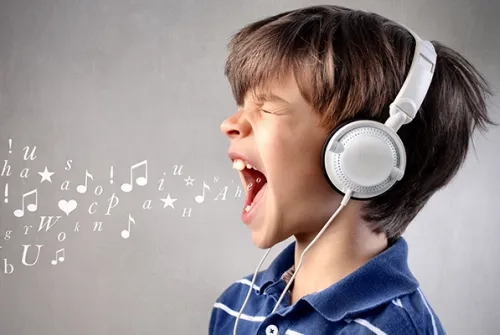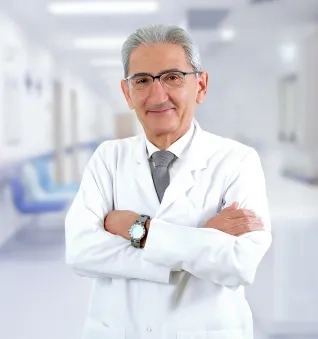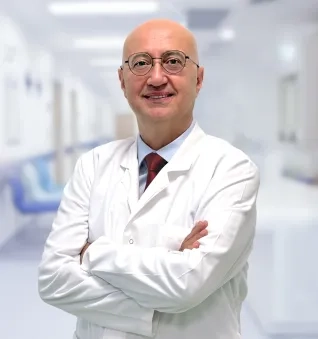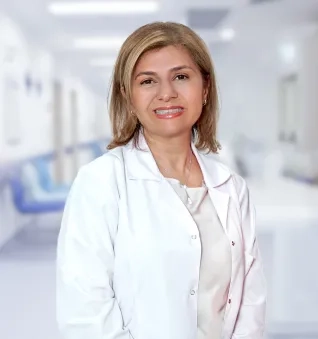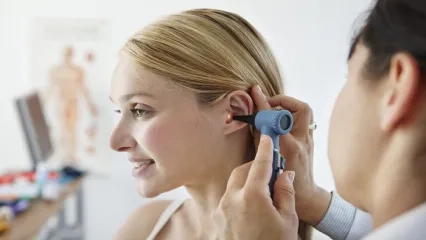Alo Yeditepe
Alo Yeditepe
A Child's Difficulty in Singing May Indicate a Voice Disorder!
Although voice disorders seem to be an adult problem, epidemiological data show that the prevalence of voice disorders in children is not at all low. Ear, Nose, and Throat Diseases Specialist Op. Dr. Ziya Bozkurt said, "Studies reveal that children have voice disorders ranging from 1 percent to 23.4 percent."
The child's voice is thin or thick, which is not suitable for their age and gender, if it is hoarse or louder than normal, or when they speak with a muffled or rough voice while speaking… Stating all these are an indicator of voice disorder in children, Yeditepe University Koşuyolu Hospital ENT Diseases, Head of and Neck Surgery Specialist Op. Dr. Ziya Bozkurt underlined that if there is a structural reason behind the voice disorder, it should not be expected to resolve spontaneously.
Why Does the Voice Detoriate in Children?
While there may be congenital voice disorders in children, later on, voice disorders can be seen depending on the wrong voice use habits. According to the information given by Yeditepe University Koşuyolu Hospital Ear, Nose, and Throat Diseases Specialist Op. Dr. Ziya Bozkurt, congenital voice disorders are listed as vocal cord cysts, sulcus vocalis, which causes grooves on the free edges of the vocal cords, and unilateral or bilateral vocal cord paralysis due to strains that may occur during birth. Vocal cord nodules are the leading voice diseases that develop later. Stating that approximately 16 percent of school-aged children have a vocal cord nodule, Op. Dr. Ziya Bozkurt said, "Other common ones are benign masses such as polyps and cysts, edema, laryngitis, muscle tension dysphonia."
These Complaints Indicate That There Is a Problem with the Sound
Stating that these children may be reluctant to talk at home, at school, or when they are with their friends due to the problems they are experiencing, Op. Dr. Ziya Bozkurt listed the main symptoms of voice disorders as follows: "Low voice, forked, rough, hoarse voice, a voice that is thin or thick, different from what is expected from your peers and gender, tired of talking, gradually becoming hoarse and distorted when you talk, waking up in the morning with a bad voice, turning your voice up during the day, hoarse voice when you sing, distorting, wheezing when you breathe, and feeling pain, burning, stinging in your throat after talking a lot."
Age of Incidence Varies Based on the Cause
Explaining that although the problems caused by genetics show themselves with the child's speech, especially the problems related to the misuse of voice increased during the school period, Op. Dr. Ziya Bozkurt continued as follows:
"Sound disturbances do not always go away on their own. This may change depending on the underlying cause. Our laryngeal structure, in which our voice is formed, changes with growth and completes its formation with adolescence. A sound disturbance may improve if it occurs for a temporary period as a result of this tension. But if there is a structural problem, it may not improve on its own. Therefore, it is important to consult a physician on time."
If the problem in the voice persists for more than 2 weeks, a physician should be consulted.
Pointing out that if the problem in voice persists for more than two weeks and disrupts daily life, communication, academic success, and participation in social activities, then a physician should be consulted without delay, Op. Dr. Ziya Bozkurt gave the following information about her treatment approach:
"If the voice problem disrupts the child's daily life, communication, academic success, and participation in social activities, then treatment is necessary. If the reason is due to the poor use of the voice, the most crucial point in the treatment of these children is to teach the child voice hygiene. When necessary, they are referred to a speech and language therapist and treated with voice therapy. If the cause of the problem is anatomical disorders or other space-occupying formations such as cysts and polyps, then sometimes surgical treatment is required."
This content was prepared by Yeditepe University Hospitals Medical Editorial Board.
”
See Also
- What Are Head and Neck Cancers? Diagnosis and Treatment
- Causes and Treatment of External Ear Inflammation
- Tonsillectomy in Children
- Ear Pain During Flight Can Be a Sign of Some Diseases!
- They Said He Could Never Speak Again Due to Laryngeal Cancer, But Today After the Surgery He Underwent, He Can Speak!
- "Vertigo Is a Treatable Condition"
- Pool and Hot Weather Trigger Ear Eczema
- Hearing Health
- Allergic Rhinitis Targets People in Big Cities
- Can Nutritional Defects Underlie Middle Ear Inflammation?
- Stem Cell May Be the Future Cure to Hearing Loss with Bionic Ear as Hope
- Warning from the specialist: "Beware if your child turns up the volume of the TV too loud!"
- Nasal Sprays Can Be Addictive!
- Sudden Hearing Loss and Dizziness Can Lead to Irreversible Results If Not Treated!
- Adenoid and Tonsil Problems in Children
- Nasal Sprays Can Be Addictive
- When Should Adenoid Surgery Be Performed in Children? When Should It Not Be Done?
- Treated For Asthma For Two Years But Has Had A Tumour In Her Trachea
- Treatment without Tampons in Nasal Surgeries
- Chance of Treatment in Patients Who Have a Tube Inserted in Their Throat to Breathe
- Can Infection Cause Permanent Hearing Loss?
- He Was Ashamed to Speak, and He Was Reborn with His New Voice
- Survived from Tumor Covering Half of Larynx With Closed Surgery
- Beware of hoarseness lasting longer than 15 days!
- Don’t Let Allergic Rhinitis Spoil Your Life
- Throat Infection
- ENT Problems Seen in the Summer
- Nose Bleeding
Alo Yeditepe

